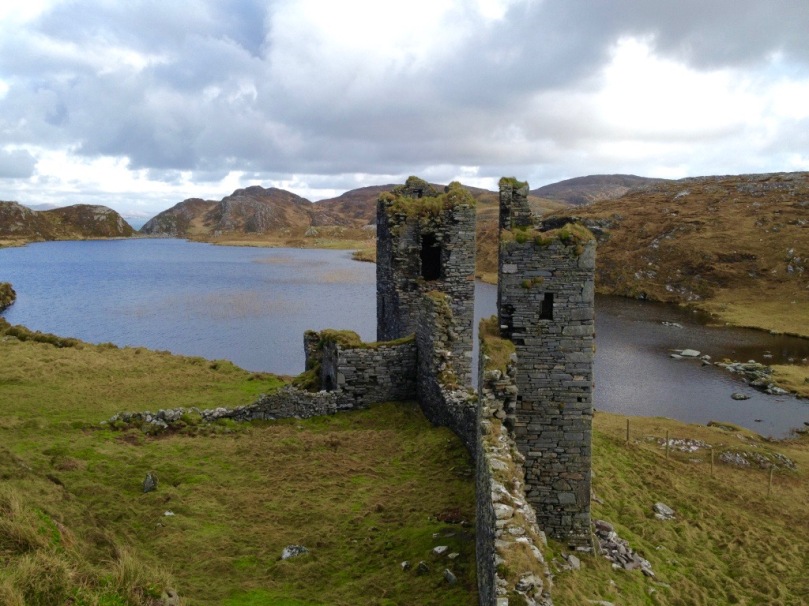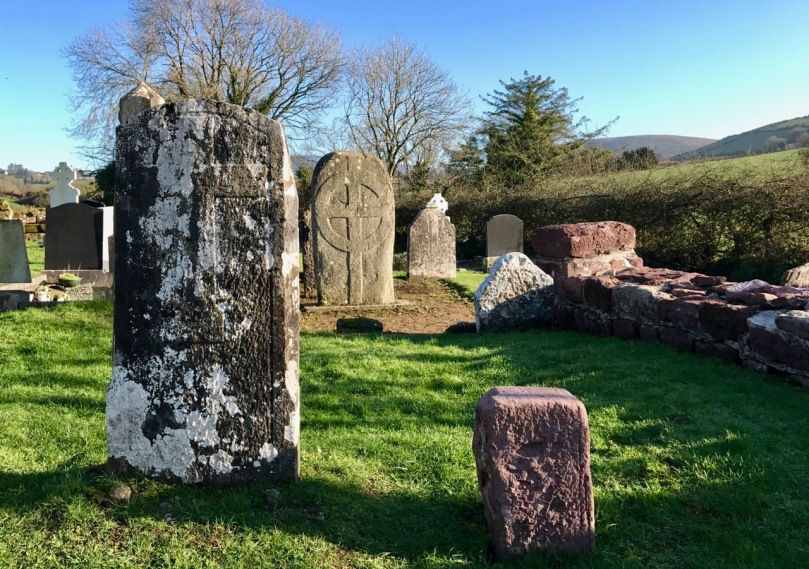How do you set about exploring your local heritage? If you’re lucky enough to live in Cork, you have some marvellous resources at your fingertips. Today I want to focus on a set of books that are a comprehensive, affordable, richly illustrated, engagingly written compendium of our fascinating history – the Heritage Series.
Dunlough Castle, also known as Three Castle Head, is an unusual example of a fortified curtain wall dating to the 15th century. It’s also, as you can see, incredibly beautiful – it’s written up in the Castles book.
County Cork has a Heritage Office and a County Heritage Officer, Conor Nelligan. He’s a Tour de Force of Heritage, indefatigable, knowledgeable, and committed to communication and consultation. He pens a regular newsletter to local history associations and interested individuals alerting us all to upcoming events, grants schemes, talks, festivals, and articles of interest. Typically, when a new volume in the heritage series is contemplated, he will send out a call for submissions and contributions.
Glanworth Bridge: “Typical of medieval bridges the arch spans are appealingly irregular, increasing in width towards the centre.” It is purported to be “the narrowest and oldest public bridge still in everyday use in Europe.”
The result is a rich collection of photographs, local information, stories and legends, expert analysis and historical detail. What’s amazing is that each volume only costs ten euro! They are available in all the local bookstores, but if you don’t live in Cork you can buy them online from the Skibbereen Heritage Centre.
This is the extraordinary Church of the Ascension in Timoleague. I first found out about it from the Heritage Churches book and wrote about it in two parts, Mosaics and Maharajas Part 1 and Part 2. The Christ the King window is by Clayton and Bell and dates to about 1900
Each book has either a lead author or an authorial team, benefitting greatly from the expertise of the overseers and the one-off contributors. Conor and his colleagues Mona Hallinan, Cork’s Conservation Officer, and Mary Sleeman, the County Archaeologist, steer each project through to completion. The result rather than piecemeal is seamless, with the volumes following a pattern for the most part of an introductory historical and architectural context followed by ‘exemplars’ of castles, or bridges, or whatever the focus of that book.
Heritage houses come in all sizes, from traditional thatched cottage glimpsed in North Cork, to Bantry House bathed in evening sunlight
This layout gives it the convenience of a guidebook – wherever you are in Cork you can decide what to see and read up on it – while not sacrificing the the social and political background in which the buildings were constructed. They are our constant companions while out and about or when planning an expedition.
The oldest church in Cork, I think, Labbamolaga. Robert wrote about this wonderful site in Molaga of the Bees
And talking of expeditions, we want to see more of those bridges! I’ve been browsing through the bridge book, learning about abutments and piers and cutwaters, not to mention different kinds of arches, and I am dying to see more of those exemplars. So look out, Dear Readers, for a future post on heritage bridges.
A picturesque clapper bridge near Ballyvourney . Is this the same bridge that Robert Gibbings engraved in “Sweet Cork of Thee” – see Robert’s post this week!
Well done, Cork County Heritage Unit – you can be justly proud of this excellent series!























